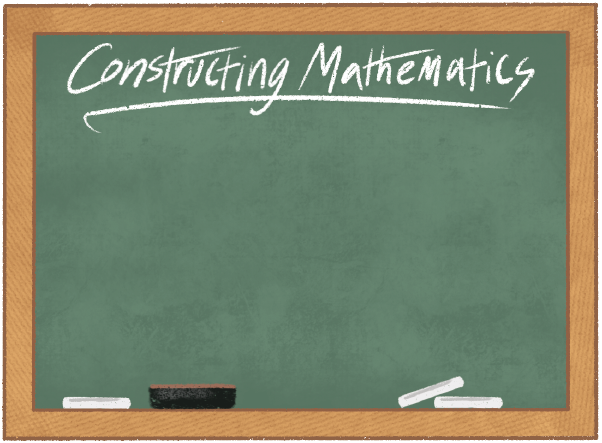
In recent years, youth activism has been on the rise in many forms, whether it’s through the creation of awareness campaigns through social media or the increased attendance at local protests. Activism has spilled over to schools like LASA, with new clubs being formed to educate students about important issues. Outside of LASA, local chapters of organizations, such as Planned Parenthood in Austin also have helped facilitate increased advocacy.
A student activist at the University of Texas at Dallas (UTD) who wished to remain anonymous believes that the initial step to activism is understanding activism has many facets and there is a clear distinction between true activism and philosophical activism. According to them, there is a clear line between writing about the idea of activism and the physical act of doing it, which entails activities like protests and creating conversations about issues.
“There’s this distinction that should be drawn between activism and philosophy and theory,” the student said. “Activism can be protests, it can also be organizing protests, or advocating for causes on social media, or talking to your friends and family about it, but it’s not this kind of more theorizing philosophy realm.”

The student also mentioned that historically, a significant portion of activism is derived from youth advocacy. For example, the majority of those involved in initially organizing protests in the Civil Rights Movement were college students. The same trend reoccurred in other situations such as when young people advocated against the apartheid government in South Africa and similar protests against the Vietnam war.
“So you do see a historical continuum, where youth activists are pretty regularly involved in these kinds of things,” the student said. “And it’s also important because young people, I think as a whole, tend to be a bit more radical than their older counterparts. I’m honestly not sure why this happens, but it is a pretty solid historical trend where it seems to be that young people are pushing for what older people are not pushing for.”
Sarah Garrett, the co-president and founder of the Students Against Gun Violence club and a Liberator news editor, stated that youth advocacy is especially important because it allows young people to pave a future for themselves. She mentioned that activism doesn’t have to be fancy, and it can be as simple as researching issues and starting conversations in your community.
“Youth activism is especially important since we are the ones who will be voting and creating policies soon,” Garrett said. “Learning about what issues bother you can prepare you for being an adult, and you can impact adults as well. I actually helped my parents vote this year by researching for them about what they’d be voting on in the Texas amendment election earlier this year.”

However, Garrett also mentions that while being a youth activist is important, there are also additional boundaries that come into play such as age. Youth activists can’t dedicate the amount of time they want to on the issues they are passionate about which makes it harder to create large-scale change.
“I think that making change on a large-scale is hard to achieve,” Garrett said. “I’m not naive enough to believe that my club is going to change the number of shootings in Texas, even though I wish I could. Organizing large protests takes a lot of time and energy, and I haven’t organized any yet.”
Although being involved in activism at a young age can be difficult, Mason Marriott-Voss from the Austin Democratic Socialist Organization (DSA) suggested that a great way to get involved despite your age is through activism-oriented clubs that are in schools. According to Marriott-Voss, even though most high school students aren’t able to vote, they still are very important to the democratic process because they can reach people in ways that adults and traditional protests might not have the capacity to do.
“Whenever a kid says something, it’s a lot easier to get excited by it,” Marriott-Voss said. “And you hear it from a different place, especially in the context of things like climate change, which is an issue that affects younger generations more than older generations, because it’s cool, longitudinally, only getting worse. And so often, you find just demographically that younger folks are more keyed into that. And so that’s an issue where, in your home, in your family, that you young people have a lot more leverage than some other folks would otherwise.”
Additionally, Marriott-Voss added that although youth activism can sometimes be challenging to get involved in, it is still very important. Currently, only the voices, needs, and opinions of adults get expressed when it comes to current issues, but he believes that having the opinion of younger people is equally important because they are also a major part of the community.
“The youth are a part of our communities, our civilization, our culture, and their voice is just as valuable,” Marriott-Voss said. “And then on some issues, like the climate issue, possibly more valuable because they are larger stakeholders in that. And being able to have use involves being able to not just be led by people who’ve been doing it for the last 50 years, but also to be led by people with new ideas, who have new perspectives, who might not have done something like this before, but are motivated and spurred to action by something they see locally. They have an optimism that some older organizers don’t have.”
I think that there’s this self-imposed barrier that kids are told by people that their voices don’t matter, that their voice isn’t relevant… and I think that gets internalized. And I think that the youth would be really surprised at how much power they wield if they were to organize and move collectively. One person on their own does not make a movement. But an organized group of people demanding something as a collective action is incredibly powerful.
— Mason Marriott-Voss
The UTD student recommends the first step to getting involved in youth activism is to find an issue that spurs a lot of interest. According to them, there can be a multitude of compelling issues, but it might be easier to focus on local activism to feel more connected to the issue and see the causes and effects of the issue more clearly.
“It starts with figuring out what really pulls you towards a cause,” the student said. “It can be anything that you’re really interested in, but you really have to have a passion for it, because it is difficult. It’s not easy. A lot of times you’ll find yourself wondering what is the point of all of this.”
According to the student, the next step is finding organizations that support the issue of interest. The student added that when first starting to be involved in advocacy-related activities, focusing on local organizations can be helpful because it can be easy to get swept away and feel lost in the big organizations. For example, when advocating for reproductive rights, getting involved in a local Planned Parenthood could be much better than getting involved in an organization that focuses on these problems at a bigger scale.
“A lot of times when we talk about advocacy, we think of really big national organizations like the NAACP (National Association for the Advancement of Colored People), which is a great organization, and if you have the effort to get involved with the NAACP, I would definitely encourage you to do that,” the student said. “But it’s much harder to get involved with those big national organizations because they’re usually pretty closed off to most people, or you have to know people, or they’re just looking at priorities that are on a national level.”

In addition to local activism, according to Marriott-Voss, using social media to spread awareness can be a key part of youth activism. He added that social media, especially in current times, has become a significant gateway in what type of ideas and issues people and youth are more exposed to and willing to discuss.
“I think that the internet and social and online spaces are spaces of community and the discourses we have there matter,” Marriott-Voss said. “And they can influence and affect people. The internet is a great place to be exposed to ideas that you’ve never been exposed to before and to be able to have conversations with people you wouldn’t have otherwise been able to have conversations with. And so using the internet as one tool of many to help affect change I think is super important.”
On the other hand, Marriott-Voss elaborated that sometimes it is easy for activists to get caught up in social media without understanding that there is a boundary to which social media can influence change. He highlighted that while social media can be a good stepping point for activists, striving past online activism to make a stronger impact on issues is an important thing to keep in mind.
“I think if we contain our movements and make them only exist online, then we’ve lost an entire sphere of what organizing and activism looks like, and how it can be effective,” Marriott-Voss said. “I think that the important part about that is to remember what it is that we are fighting for and pushing for our material changes, changes to legislation, changes to working conditions, changes to employment status, changes to legal structures, or changes to policing. These are all physical things that exist in the physical world. And yelling about it on the internet is great to generate energy, maybe educate people who don’t understand how those things work.”

Marriott-Voss added that while youth activism has been on the rise, there seems to be a trend of a self-imposed boundary placed by the youth on their voice. While making a change can feel impossible at a younger age, Marriot-Voss advises that it’s key to not be influenced by others’ opinions about the amount of change youth activists make and believe in the positive impact and power advocacy has on issues.
“I think that there’s this self-imposed barrier that kids are told by people like me that their voices don’t matter, that their voice isn’t relevant, that it’s not your turn, that you don’t know what you’re talking about,” Marriott-Voss said. “And I think that gets internalized. And I think that the youth would be really surprised at how much power they wield if they were to organize and move collectively. One person on their own does not make a movement. But an organized group of people demanding something as a collective action is incredibly powerful.”



